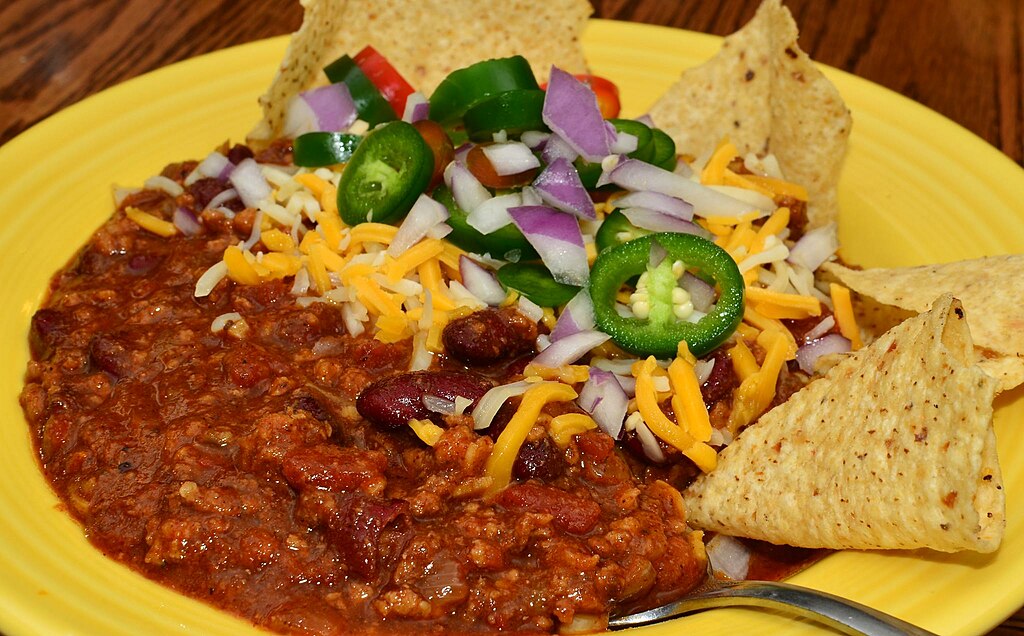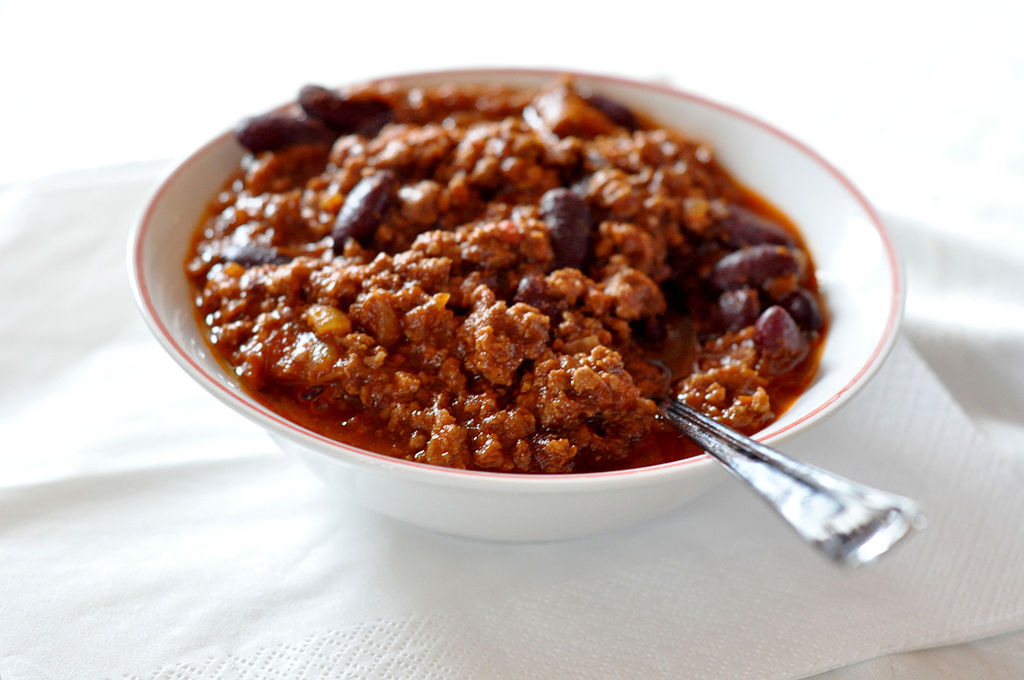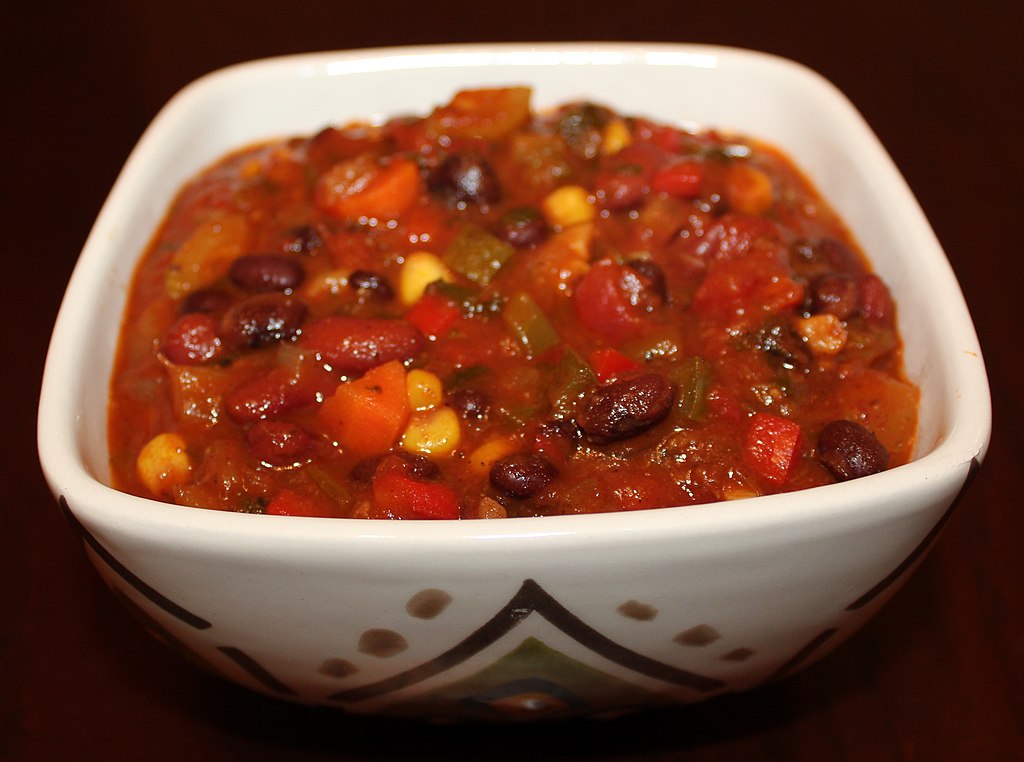In This Article Show
I’ve worn many hats over the years, but one of the most rewarding (and challenging!) has been that of a mum. I’ve had to whip up a fair share of meals between picky eaters, hungry teenagers, and the occasional surprise dinner guest.
And let me tell you, nothing brings my family together like a hearty bowl of chili. But here’s a little secret: It’s not just the meat, beans, or aromatic spices. It’s the unsung hero of the pot – the onion. Sounds simple, right? But the type of onion you choose can change the entire vibe of your chili.
So, if you’re scratching your head in the middle of the grocery aisle (like I’ve done countless times), wondering which onion will make your chili sing, you’re in the right place. Let’s dive into the world of onions and discover which ones are the best match for that chili you’re cooking up.
Understanding the Role of Onions in Chili
If you’ve ever taken a bite of chili and thought, “Hmm, something’s missing,” chances are, it’s the onion. When I first started cooking for my family, I admit I underestimated the humble onion. But through the years and countless batches of chili, I’ve come to recognize its indispensable role.

A Historical Perspective
Historically, onions have always been part of the foundational trio in many dishes, not just chili. Alongside garlic and bell peppers, onions make up the ‘holy trinity’ in several cuisines. Why? Because they’re natural flavor enhancers. Think back to traditional chili recipes passed down through generations. The onion was always there, quietly lending its depth and richness.
The Science of Flavor
Now, let’s get a tad geeky (but not too much, promise). Onions contain natural sugars and compounds that, when cooked, undergo a transformation. Ever noticed how they go from sharp and eye-watering when raw to sweet and mellow once cooked?
Great deals to snatch for your little ones 🎉
That’s the magic of caramelization. This process brings out an onion’s natural sweetness, providing a backdrop for the bolder flavors in chili, like spicy peppers or smoky cumin.
In a nutshell, while meats or beans might be the ‘stars’ of chili, onions are the supporting actors that make the lead shine. They balance out the spicy, smoky, and tangy elements, ensuring every bite is a symphony of flavors. So the next time you’re preparing chili, give a little nod to the onion. After all, it’s working overtime to make sure your dish is delicious.
Types of Onions and Their Flavor Profiles
Onions come in various shapes, sizes, and most importantly, flavors. Each type brings its unique characteristics to the table, ensuring that every chili dish can have its distinct taste. Let’s break down these types and get to know their flavor profiles a bit better.
1. White Onions
The all-rounders of the onion family. They have a mild flavor that isn’t too overpowering, making them a versatile choice for most dishes. Their subtlety makes them a perfect base, especially if you’re looking to highlight other ingredients.
2. Yellow Onions (or Brown)
These are the workhorses in the world of onions. With a stronger flavor that deepens and sweetens as they caramelize, they’re often the go-to for classic chili dishes. They offer a depth of flavor that’s hard to match, making them a staple in many kitchens.
3. Red Onions
Not just pretty to look at! Red onions bring a touch of sweetness with a hint of sharpness. While they’re often seen gracing salads, don’t be fooled. When cooked, they can add a lovely richness to chili, especially if you’re going for a dish with a touch of sweetness.
4. Green Onions (or Scallions)
While they might not be the first choice for the main onion in a chili, their mild taste makes them an excellent garnish. Sprinkle some chopped green onions on top of your finished chili for a burst of fresh flavor and a pop of color.
5. Sweet Onions (like Vidalia)
As the name suggests, these onions are all about sweetness. They’re softer in texture and are ideal for those who want to tame the heat of a spicy chili. Adding them brings a gentle, sweet undertone that can contrast beautifully with hotter ingredients.
6. Shallots
Think of shallots as the refined cousins of the regular onion. They have a delicate, slightly sweet taste that can add a nuanced flavor to your chili. If you’re looking to elevate your dish subtly, give shallots a try.
Factors to Consider When Choosing Onions for Chili
Choosing the right onion for your chili isn’t a one-size-fits-all scenario. Much like picking the right spices or the best cut of meat, the choice of onion plays a crucial role in determining the final taste of your dish. Here are some factors you might want to consider when making that decision:

Type of Chili Being Made
- Beef Chili: With its rich, hearty flavor, beef chili often benefits from onions that add depth, like yellow onions.
- Chicken Chili: Chicken has a lighter profile, so you might want an onion that complements rather than overwhelms, such as white onions.
- Vegetarian or Vegan Chili: Without the pronounced flavors of meat, you have more room to play. Red onions can offer a touch of sweetness, or shallots for a more subtle taste.
Desired Sweetness and Spiciness Level
If you’re going for a spicy kick, balance it out with sweeter onions like Vidalia. On the flip side, if you’re making a milder chili, the sharpness of a red or yellow onion can add some needed zest.
Other Ingredients in the Chili
Consider the other main ingredients. Are you using sweet bell peppers? Maybe opt for a milder onion. Got a lot of fiery chilis? A sweet onion might help cool things down a bit.
Cooking Time and Method
Long, slow cooking times (like in slow cookers) can mellow out even the most robust onions. In contrast, a quick stovetop chili might retain more of the onion’s original flavor profile.
Personal Preferences
Lastly, and perhaps most importantly, consider your (and your guests’) personal preferences. If your family isn’t fond of overly sweet or sharp tastes, adjust your onion choice accordingly.
Expert Recommendations: Best Onions for Different Chili Recipes
Navigating the vast world of onions can seem daunting, especially when aiming for that perfect bowl of chili. Drawing insights from culinary experts and seasoned chefs, here are some top recommendations for selecting the ideal onion based on your chili type:
1. Classic Beef Chili
- Recommended Onion: Yellow onions
- Why: Their strong flavor profile stands up well to beef, and their tendency to sweeten upon caramelization adds depth to the rich meatiness of classic beef chili.

2. Chicken Chili:
- Recommended Onion: White onions
- Why: Their mild nature doesn’t overpower the chicken, offering a balanced and nuanced taste.
3. Vegetarian or Vegan Chili
- Recommended Onion: Red onions or shallots
- Why: Red onions bring a splash of color and a hint of sweetness, which can complement the variety of vegetables. Shallots, on the other hand, lend a delicate, slightly gourmet touch, enhancing the natural flavors of the veggies.
4. Spicy Chili
- Recommended Onion: A mix of yellow and red onions
- Why: The robustness of yellow onions combined with the subtle sweetness of red onions can balance the heat, ensuring your chili has spice without being overpowering.

5. Mild Chili
- Recommended Onion: Sweet onions, like Vidalia
- Why: Their inherent sweetness perfectly tames and complements milder chili flavors, preventing the dish from feeling too bland.
Tips for Preparing and Cooking Onions for Chili
Working with onions doesn’t have to end in tears (literally and figuratively). Over the years, chefs and home cooks alike have shared some of their best tips for prepping and cooking onions to make the most out of their flavors. Here’s a compilation of those nuggets of wisdom for your chili-making endeavors:
1. Proper Dicing and Slicing Techniques
Uniformity is key. Ensure your onion pieces are of a consistent size to ensure even cooking. Smaller dice will disintegrate into the chili, providing a thick base, while larger chunks will remain distinct for a bit of bite. The root end is your friend. When cutting, leave the root end intact. It helps hold the onion together, making dicing easier and more precise.
2. Sautéing or Caramelizing Onions
If caramelizing, remember that patience pays. Cook on low heat, stirring occasionally. This slow process draws out the natural sugars, resulting in a sweet, golden-brown delight. Use a neutral oil like vegetable or canola. If aiming for a richer flavor, a knob of butter works wonders.
3. Reducing Pungency
Rinse After Chopping: To lessen the bite of raw onions, consider giving them a quick rinse under cold water after chopping. This helps wash away some of the sulfur compounds responsible for their sharp taste and teary effects.
4. Storing Cut Onions
Airtight Containers: If you’ve diced more than you need, store the leftovers in an airtight container in the fridge. Use within a day or two to maintain freshness.
5. Eye-Protection Tips
Chill Before Chopping: Place onions in the refrigerator for about 30 minutes before chopping. This can reduce the volatility of the tear-inducing compounds.
Sharp Knives: A sharp knife causes less cell damage, releasing fewer irritants. Plus, it’s safer and more efficient!
6. Boosting Onion Flavor
Onion Powders or Granules: If you ever feel your chili lacks that onion punch, a sprinkle of onion powder or granules can intensify the flavor without adding more bulk.
Wrapping It Up
There you have it—a complete guide to choosing the perfect onion for your chili, straight from the chopping board to the dinner table. Who knew that something as simple as an onion could make such a big difference in your dish?
Whether you’re a chili novice or a seasoned pro, the right onion can elevate your chili from good to unforgettable. So the next time you find yourself pondering onions in the grocery aisle, you’ll know exactly which one to pick for that show-stopping pot of chili. Happy cooking!












